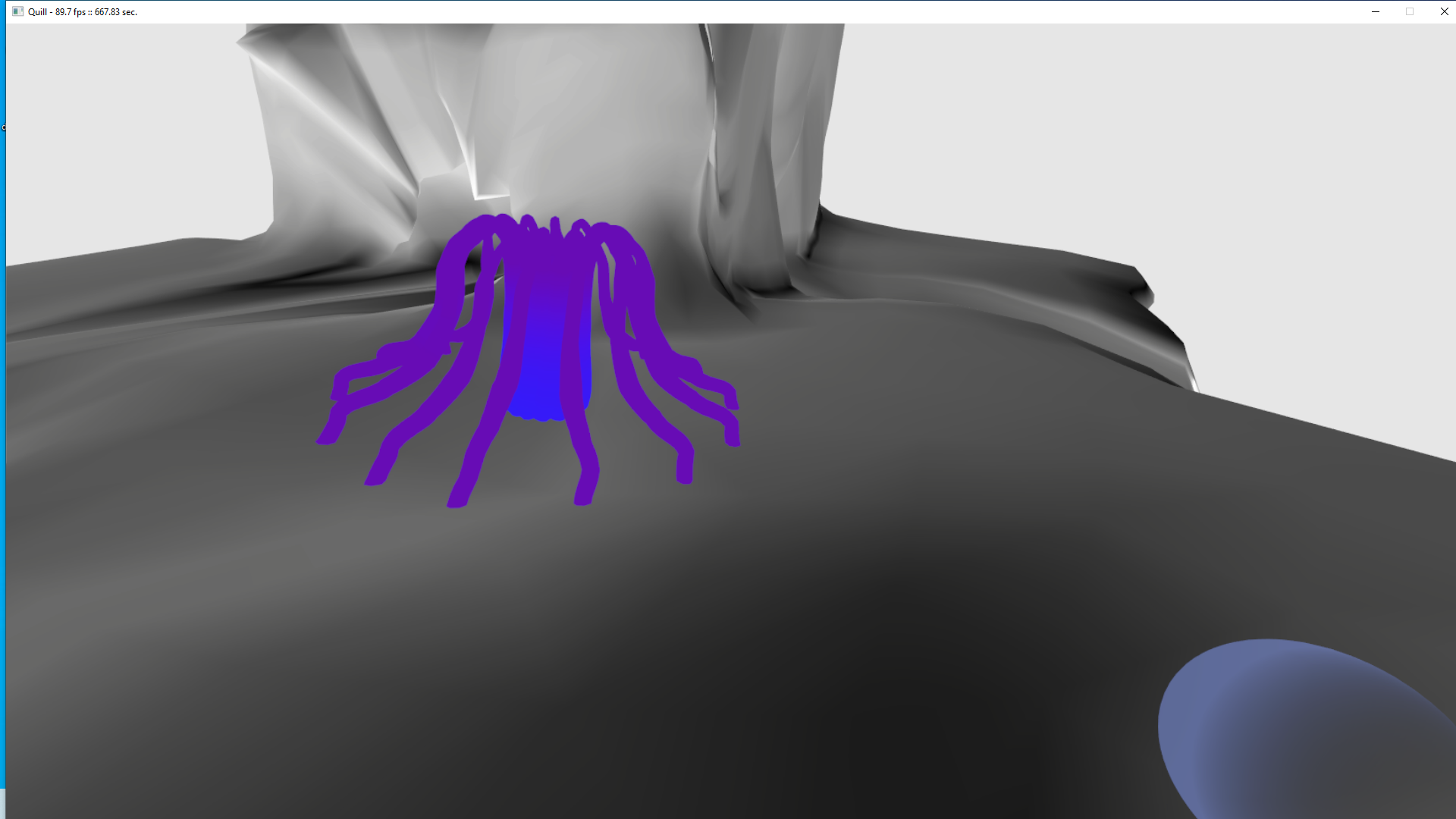Initially I started out with a few core ideas:
I wanted this scene to highly contract the city scene in order to strengthen the message of each area.
By showing the 'real life' of the foxes, I wanted the viewer to empathise/ feel sorry for them, for this reason the main themes of the scene were entrapment and darkness, using the big buildings and colour palette to make the viewer feel like one of the foxes.
Using this direction I thought what would most directly contrast the street scene.
Entrapment - Freedom/Space
Darkness - Light/Saturated
Blocky Shapes - Random/Sporadic Shapes
Basing my scene off these core values allowed me to create expressive and unique animations to contrast the blocky and desaturated shape language in the first scene. I wanted to take the idea of freedom and space to build a large open world exploration, similar to my initial plan.
I also wanted this scene to loosely present the visual metaphor of a car engine (because of the brake fluid), so I decided to make a 'mechanical' forest. By creating scenery that seems to be working mechanically in unison, the scene not only feels like a cohesive and living environment, but also perfectly presents this visual metaphor.
I struggled to figure out how to add fog to my animated fbx files
In order to make this work I had two options:
1. Allow procedural terrain generation
This means that the terrain and objects would be placed randomly around the viewer with some constraints
(less control over landscape design, would take a lot of code, most 'explorative' option)
2. Create a limit to the map
This is a more reasonable option, since creating a contained space means the most control over design as well as less processing power needed, meaning I can make the space and objects more complex.
When planning the map for the final scene, I kept in mind two core 'reveal' moments, the first being when the player opens the doors, and the second being when they look over the cliff edge. These moments should be designed to strengthen the feelings of scale and wonder only virtual reality can provide.
One of these moments which made me realise this emotional and mystical feeling is in Studio Syro's 'The Neon Jungle' where the viewer is lifted out of the forest and sees the entire island. This sense of scale, mystery and life in animation is largely unique to VR, and though we can perceive these things in 2D animation, VR allows the presence which amplifies these feelings immensely.
Some rough notes/plans for the island:
I initially started designing in gravity sketch, however I soon realised its limitations in terms of 'loose' planning, since each shape had to be carefully moulded, it didn't allow time for quick experimentation and VR sketching. For this reason I decided to make a rough pass in Tilt Brush first before making the final mesh in Gravity Sketch. This meant my finished result would be more efficient, while having a solid Tilt Brush 3D reference to build from.
Planning in Tilt Brush was very useful in helping with decisions about colour scheme, shapes and composition within this scene.
I used the new subdivision surface feature in Gravity Sketch to create a smoother shape, this allowed me to make the interesting and natural looking surfaces of the island. It also meant I could form the entire island in one shape/mesh, making a more efficient object.
I then learnt that you could bring gravity sketch files into quill. This was very beneficial in helping accurately plan the space and scale of my animations. This sped up my workflow significantly, since every time I imported an animation within the island, I could match it to the previous version and it would be in the exact place I created it in.
This was a plan for PPEE, and IVD. Both concepts I broke down in my dissertation, I use both to more accurately predict where the viewer will look/move. Each red line represents a predicted viewing angle, by using these I guide the viewer roughly in the direction I want them to experience the world. I also planned some areas to fill in order to continue guiding the viewer.


